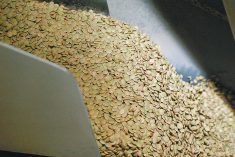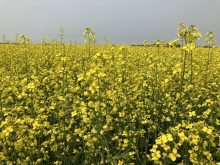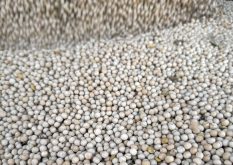Crop analysts expect Canadian flax acres will be up dramatically from last year yet still well below pre-Triffid levels.
However, prices will likely be influenced more by demand than supply in 2011-12, said Greg Kostal, president of Kostal Ag Consulting.
Flax oil has become the highest priced industrial oil in the European Union, leading to constricted demand for the product.
In addition, Canadian growers are facing increased competition into that market from former Soviet Union countries.
Meanwhile, China has been chased away from this year’s flax market by a vastly reduced Canadian crop.
Read Also

Moe shares goals for Chinese trade mission
To advocate on behalf of Saskatchewan agriculture and other industries, as well as the Canadian canola, pork, pulse, and seafood industries, Saskatchewan Premier, Scott Moe, is travelling to China on a trade mission.
“Our demand base is just less than what it was five years ago,” said Kostal. “Demand is shallower and therefore we don’t need as much.”
That’s why a collection of analysts expect growers will seed 1.29 million acres of flax this spring, up from last year’s 925,000 acre crop but well below the 1.71 million acres planted in 2009.
John Duvenaud, analyst with Wild Oats Grain Market Advisory, said there’s not enough of a price premium over canola to warrant a return to 2009 acreage levels.
“The only reason farmers are going to plant flax is to spread out their harvest,” he said.
Chuck Penner, president of Left-Field Commodity Research, said flax can be a last-minute decision for farmers, which can give the crop an acreage bump in a year like this when it appears seeding will be delayed.
But because of the Triffid incident, that is less likely to occur than it has been in the past, he said. Canadian flax growers saw their European market dry up after small amounts of Triffid were found in shipments to Europe.
If flax buyers wanted more flax seeded this spring, new crop bids would be $3 to $4 a bushel higher than canola, which is a far cry from where the spread is today.
“Right now the market is speaking volumes that demand is just passive and ho-hum,” said Kostal.
He believes the $16 per bu. high that flax hit in February is a strong candidate for the 2010-11 marketing year peak.
The worst-case scenario for price would likely be parity with canola, which could stimulate renewed demand from China.
China was the saviour of the Canadian flax industry in 2009-10 when it bought 245,000 tonnes, more than compensating for the 159,000 tonne decline in sales to Europe due to the Triffid incident.
Kostal said in order for flax markets to “get excited,” Canadian production in 2011-12 would have to be in the 600,000 to 700,000 tonne range.
Agriculture Canada is forecasting 850,000 tonnes of production based on 1.57 million acres, which is well above the average trade estimate of 1.29 million acres.
Statistics Canada is scheduled to release its seeding intentions report April 26.















